Temporomandibular Dysfunction
By Dr. Jason Slagel | March 10th, 2021
Let’s start with getting the terms clarified: TMJ is the Temporomandibular Joint itself, while TMD is Temporomandibular Dysfunction of the TMJ. Cool? Cool. So let’s dive in.
So first let’s look at the anatomy so that we can understand exactly what is going on and why it is happening. “Temporomandibular” means the place where the Temporal bone of the skull (where your temples are) and the Mandibular Bone (jaw) meet. Take a look at the picture below to see what this looks like.
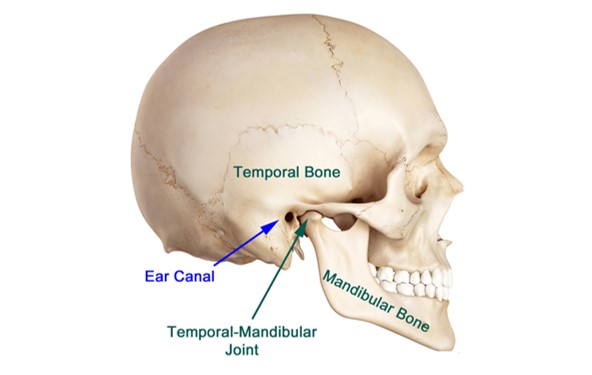
The TMJ is the joint that allows your jaw to move. Now the interesting thing about the TMJ is how incredibly complex it is. At first glance, it seems like a very simple hinge joint. But upon closer inspection, there are a lot of muscles, ligaments, bones, and nerves that impact the jaw from many different directions. Let’s go through them.
There are many muscles connecting the jaw to both the skull and the neck. This automatically makes this joint very complex because there are now many more moving parts, so if one of the moving parts gets shifted out of place from some type of accident or injury it impacts the rest of the moving parts. Once one of these muscles is not moving properly, the jaw will no longer be moving properly, which can cause many issues. Here is what that group of muscles looks like, and keep in mind that any muscle in the picture can impact the TMJ either directly or indirectly, causing TMD.
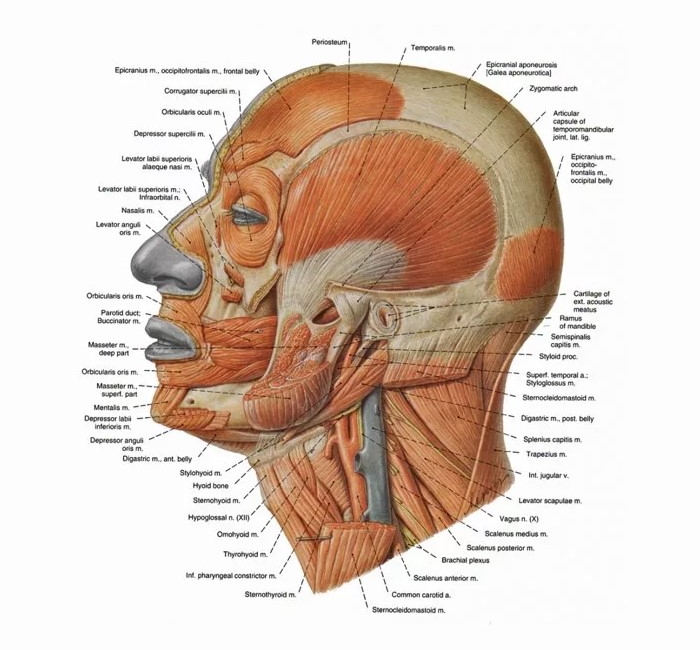
The second way the TMJ can be impacted is through the ligaments. Ligaments are what holds everything together and give it stability, so if there is damage to ligaments (especially in the upper neck) then the stability of the head, neck, and jaw is affected. There are specific ligaments connecting the jaw to the Atlas (the top bone in the neck) and there are also specific ligaments connecting the skull to Atlas as well. Therefore, ligament damage from some type of accident or injury can affect the positioning and stability of the head and neck, and therefore the TMJ (as we discussed before), causing TMD. Here is a picture of the ligaments surrounding the jaw.
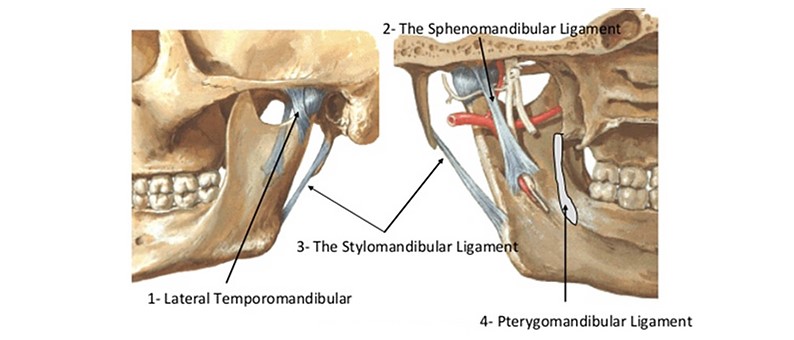
The third way the TMJ can be negatively affected is if the bones surrounding it are not positioned correctly. Since the boney joint of the TMJ connects the jaw to the skull, many surrounding problems can first be felt there. If the bones of the neck, specifically the Atlas, have been shifted out of position due to some accident or injury, then the head, neck, and jaw are no longer positioned correctly. This will result in pain or discomfort somewhere in that system, whether it be headaches, neck pain, or TMJ pain. Here is what the structure of the head, neck, and jaw can look like if those bones have been shifted out of proper position (which may cause TMD) and then what they are supposed to look like on x-rays.
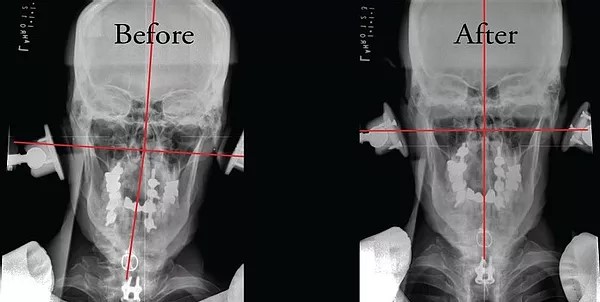
That shift that you see of the bones being out of place impacts the nerves passing through them. When the bones shift out of place, it can put compression or tension on the nerves, which alters them and makes the nerves (and the organs and tissues they supply) dysfunctional. Some of these nerves go to the head, face, and jaw and control things like chewing and talking. The TMJ is particularly sensitive to nerve issues and can have extreme pain, movement disorders, or even immobility as a result.
*Side Note: there has been lots of research lately describing how jaw dysfunction (TMD) predictably alters your posture and gait, which can contribute to lots of other issues in the body such as low back pain, hip pain, sciatica, etc. So fixing the head and neck can fix the jaw, and fixing the jaw can then, in turn, fix the posture, which then can fix the other conditions being caused. This really highlights the importance of finding out what is really causing the TMD.
The most interesting thing about this whole TMD problem is that in many cases, the original problem has to do with the head and neck positioning. In these cases, the TMJ pain is a secondary condition being cause by the primary condition of the head and neck being shifted out of place. Many people who have tried different treatments for their TMJ pain and have not found permanent relief actually have not had the primary condition fixed, and are trying to treat a secondary condition.
In many cases, the shift of the head and neck needs to be addressed FIRST before the TMJ issues will heal.
The Atlas (the top bone in your neck) is responsible for most of the range of motion of your head, so since it is so mobile, it’s not very stable. This is why it can be shifted out of place easier than any other bone in the spine. If you have an injury that damages the connective tissue that holds the atlas in place, it can shift, causing many issues, including TMD. The picture below (similar to the x-rays shown above) shows what this can look like.
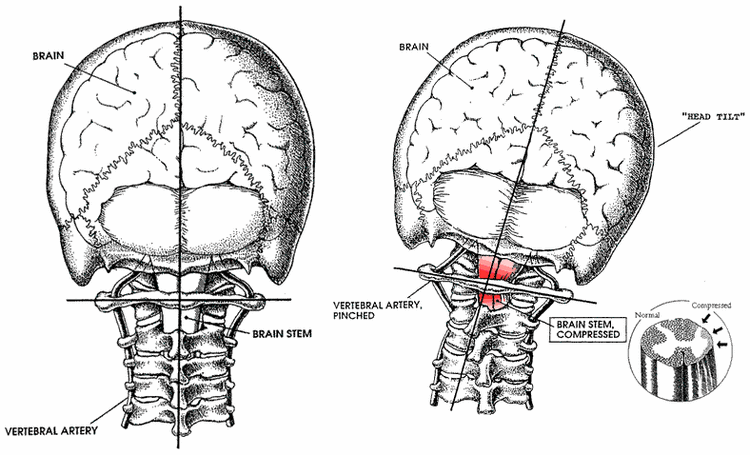
The way we correct this problem is by addressing the root issue, which is the shift of the atlas out of position. We take extremely precise x-rays of the head and neck and measure that shift down to 1/100th of a degree from all three dimensions. Then, we can measure exactly how the atlas has shifted out of place and we can calculate how to correct it. This is all without any twisting, cracking, or popping. Once the atlas is corrected back to its proper position, the position of the jaw usually is restored as well. This means that through this the TMJ can be corrected and the TMD can actually improve and possibly resolve.
If you would like to hear from other people with TMD who have been helped by Structural Chiropractic (also called Upper Cervical Chiropractic, or NUCCA), then check out these links:
Here is some published research about FM and Structural Chiropractic (also called Upper Cervical Chiropractic or NUCCA):
Stay One Step Ahead of Pain
Request a complimentary consultation today using the button below or contact our office at +1 954 842 2677 to see if Structural Spinal Care is right for you.
